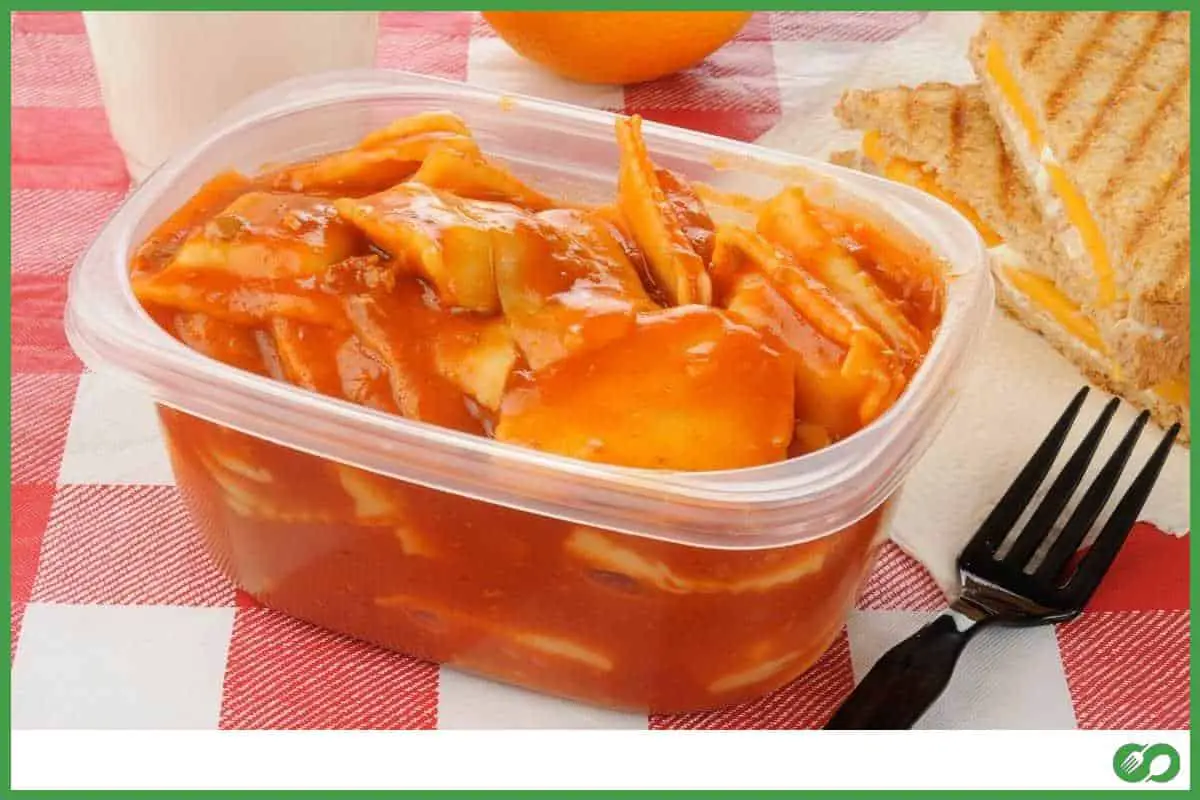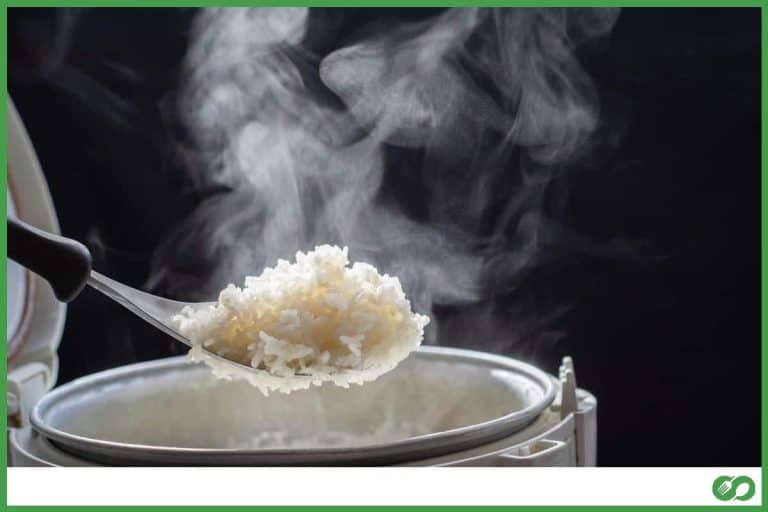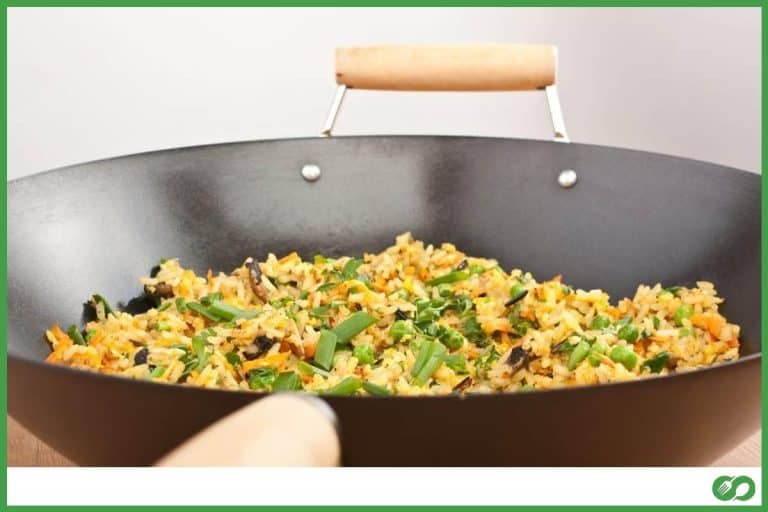Will Plastic Melt in the Microwave? (With safety tips)
This post may contain affiliate links which means that, if you choose to make a purchase, I may earn a small commission at no extra cost to you.
Plastics are chemicals made from fossil fuels that have a wide range of capabilities and characteristics. In our kitchens, plastics play an important function. Every day, our food comes into touch with plastic in a variety of ways, from storage to serving. So, the question is: will plastic melt in the microwave?
Microwaves are quite strong, and plastic may melt in them. However, there are FDA-approved plastic containers that are safe for heating your food in the microwave. There is always a chance of chemical leaching when you heat plastic food containers.
Is it time to get rid of your plastic containers? Certainly not. That isn’t to say that all plastics are hazardous to microwaves. Moreover, different plastics react differently in the microwave, and fatty foods, such as meats and cheeses, reach extremely high temperatures, which can cause the plastic to distort or melt. If it sounds a bit too complicated, don’t worry. I’ll cover everything about microwaving using plastics in the rest of the article.
Which Plastics are Microwave-safe?
The Food and Drug Administration (FDA) is in charge of determining what is microwave-safe in the United States. A microwave-safe plastic dish will have the words “microwave-safe” somewhere on the container.
| Categories | Characteristics |
| Type 5 Polypropylene | Best for “Microwave-safe”. This material is strong and resistant to heat. The plastic feels cold after being microwaved. |
| Type 1 polyethylene terephthalate, type 2 high-density polyethylene, and type 4 low-density polyethylene | Sometimes “Microwave-safe”. Use with caution as when combined with strengthening chemicals to prevent the plastic from melting in the microwave, these varieties are microwave-safe. |
| Type 3 Polyvinyl chloride, type 6 polystyrene, and type 7 polycarbonate | Not “Microwave-safe”. They may leak Bisphenol A, a potentially fatal toxin, into the food, making them possibly hazardous. |
Looking for the recycling sign, a triangle of arrows, generally on the base of plastic goods, is one method to tell them apart. So, there is occasionally a number inside the triangle, which indicates the sort of plastic the object is made of.
I will highly advise you that the most essential thing to remember is to carefully go through the labels on your plastic containers before putting them in the microwave. So, better be safe than sorry.
Therefore, I will suggest you buy these plastic containers which are BPA-free and has the label microwave-safe.
Melting Points of the Types of Plastics
Although different forms of plastic have varying melting temperatures, the majority of them are over the maximum temperature of liquid water under typical conditions with ease, which is 212 degrees Fahrenheit.
| Types of Plastics | Melting Point (Fahrenheit) |
| Type 5 Polypropylene | 338 Degrees |
| Type 1 Polyethylene terephthalate | 491 Degrees |
| Type 2 High-density polyethylene | 266 Degrees |
| Type 4 Low-density polyethylene | 248 Degrees |
| Type 3 Polyvinyl chloride | 167 Degrees |
| Type 6 Polystyrene | 212-248 Degrees |
| Type 7 Polycarbonate | 550-600 Degrees |
What Happens When You Microwave Non-microwave safe plastic?
Microwaving a polystyrene container will leach carcinogenic chemicals. On the other hand, microwaving a polyethylene terephthalate will leach a metal that is antimony. Basically, hazardous chemicals will be released if you accidentally microwave a non-microwave safe plastic container.
Another type of plastic to worry about is polycarbonate. They usually leach chemicals named Bisphenol A that cause high blood pressure to even harm your prostate glands. Also, this chemical is used to create polycarbonate plastic. So, a small intake of BPA may not be hazardous but it is better to stay away from microwaving it.
Carcinogenic and antimony are things to be cautious about. One can cause cancer and the other may damage your intestines. So keep in mind before microwaving a container that contains PET.
As you already know by now, type 5 polypropylene is the best plastic for microwaving. But be aware, the worst that can happen is if you leave a thin PP container in the microwave for too long, it will soften or melt.
Can You Microwave Plastic Wraps?
When cooking food in the microwave, microwave-safe plastic wrap can be used, but some care must be taken. To reduce the danger, keep the plastic wrap above the food surface, use a low or medium power level, and microwave for less than 2 minutes.
According to the FDA, you can use plastic wrap in your microwave oven if it is microwave-safe. Many people, including myself, cover our meal with plastic wrap while reheating it to prevent it from splattering. So, before you go out and purchase some plastic wrap, double-check that the label says microwave-safe.
Plastic wraps that are microwave-safe or microwave-proof are composed of high-quality materials that can be reheated in the microwave. It will not harm your health and is completely safe to use if you take a few measures.
I will recommend you to buy the Kirkland plastic wrap for its reputation and high quality. Further, it can withstand temperatures as low as the freezer and as high as the microwave oven.
How to Microwave Plastic Wraps:
If you’re going to use plastic wrap in the microwave, there are a few rules to follow that you should know.
- Set your temperature of the microwave to medium or low power.
- It is better to use a dish that is deep enough to have high sides.
- Create a distance between the plastic wrap and your food.
- Microwave for two minutes if it is on high power. If on low you can microwave for 20 minutes.
Safety Tips for Microwaving Plastic Wraps
Let’s talk about plastic wraps and microwave safety. A lot of people often ask the question: Is it safe to microwave plastic wraps? The proper answer to this concern is, yes but check the labels before using them. Here, I’ll be talking about some of the safety tips and tricks regarding plastic wraps and microwaves.
- You must first inspect the quality of the plastic wrap before purchasing it. Invest in a good and reputable brand.
- Then poke a hole on the plastic wrap which you are using to cover a dish or a bowl and turn back a corner for air circulation preventing your hands from burning from the steam.
- After microwaving the plastic wrap, do not reuse it.
- Again make sure to maintain a space between the wrap and food.
- Lastly, keep in mind that plastic film is a fragile material made of light chemicals, thus maintaining the time and temperature to a minimum.
Steps to Take to Save Plastics from Melting in Microwave
Even though some varieties of plastic wrap have an FDA-approved microwave-safe label, if it comes into direct contact with hot food in the microwave, it may melt and leak some of its contents into the food. Hence, the most essential thing to remember is to carefully read the labels on your plastic containers before putting them in the microwave.
Consider the following guidelines to keep your food and plastic safe, when you microwave them:
- Ensure that your plastic container is BPA-free.
- Next, avoid using takeaway containers in the microwave.
- Then, don’t use a broken or old plastic container to microwave.
- Also, try not to use plastic water bottles in the microwave.
- Do not reuse the plastic wraps after microwaving for the first time.
- On plastic containers, look for the recycling symbols 1, 3, 6, or 7, and avoid those labeling- 1, 3, 6, or 7.
- Make sure your plastic containers are not too thin as overheating in the microwave may melt or soften them.
- So, try avoiding high fat and sugar contents as these have higher boiling points than water which enables the plastic container to melt while microwaving.
- Furthermore, try looking for the FDA-approved microwave safe symbol on your plastic container. The symbol features a microwave and 3-5 wavy lines inside it representing microwave energy.
- Finally, don’t close the lead of the plastic container tightly as you need proper air ventilation when you are microwaving it.









